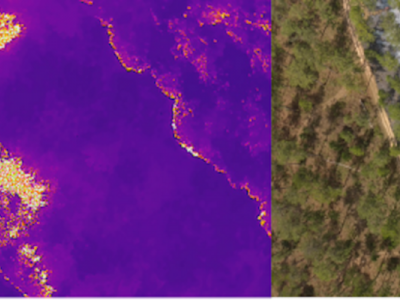Communications

This MATLAB script implements a reinforcement learning (RL) approach to optimize IRS phase configurations in a MIMO wireless system. The implementation features a basic MIMO setup with a 16-element IRS operating at 12 GHz (mid-band frequency). Using the policy gradient method with a two-layer neural network, it learns optimal phase shifts while considering user mobility and Rician fading channels. The system models both direct and IRS-reflected paths, incorporating realistic path loss and channel conditions.
- Categories:
 106 Views
106 Views
This MATLAB script demonstrates an approach to beamforming and interference suppression in scenarios with multiple users and multiple interferers. It constructs an N-element linear array, computes beamformer weights through a generalized eigen-decomposition of summed desired and interference correlation matrices, and then runs a Monte Carlo simulation to estimate the Signal-to-Interference-plus-Noise Ratio (SINR) for one of the users under random channel conditions.
- Categories:
 161 Views
161 Views
Nonlinear distortion is critical for optical communication systems with a high baud rate and a high-order modulation format. Thus, a simple and accurate method to measure the nonlinear distortion is highly desired. Although simple notch, which directly removes the certain frequency components of nonlinear system input and then measures the re-growth components of nonlinear system output, is straightforward to measure nonlinear distortion, it is only applicable to the Gaussian signal.
- Categories:
 98 Views
98 Views
The benchmarking dataset, GenAI on the Edge, contains performance metrics from evaluating Large Language Models (LLMs) on edge devices, utilizing a distributed testbed of Raspberry Pi devices orchestrated by Kubernetes (K3s). It includes performance data collected from multiple runs of prompt-based evaluations with various LLMs, leveraging Prometheus and the Llama.cpp framework. The dataset captures key metrics such as resource utilization, token generation rates/throughput, and detailed inference timing for stages such as Sample, Prefill, and Decode.
- Categories:
 182 Views
182 Views
Moving away from plain-text DNS communications,
users now have the option of using encrypted DNS protocols
for domain name resolutions. DNS-over-QUIC (DoQ) employs
QUIC—the latest transport protocol—for encrypted communi-
cations between users and their recursive DNS servers. QUIC is
also poised to become the foundation of our daily web browsing
experience by replacing TCP with HTTPP/3, the latest version
of the HTTP protocol.
Traditional TCP-based web browsing is vulnerable to website
- Categories:
 82 Views
82 Views
To verify the tracking capability of a DP-IMDD system, a post-FEC experiment is performed by tuning on the KP4 FEC encoder and decoder on the line side. With random scrambling or with hand shaking, vibrating or twisting the fiber, there is no codeword error observed in 2 minutes and the reported KP4 FEC T-max did not exceed 4
- Categories:
 23 Views
23 Views
Training and testing the accuracy of machine learning or deep learning based on cybersecurity applications requires gathering and analyzing various sources of data including the Internet of Things (IoT), especially Industrial IoT (IIoT). Minimizing high-dimensional spaces and choosing significant features and assessments from various data sources remain significant challenges in the investigation of those data sources. The research study introduces an innovative IIoT system dataset called UKMNCT_IIoT_FDIA, that gathered network, operating system, and telemetry data.
- Categories:
 437 Views
437 Views
Here is a dataset for our paper RED-Scenario: A Resource-Efficient Deployment Framework for Scenarios through Dependency Package Management
Dependency and Size Knowledge Graphs for 10979 Python packages with 597,049 versions, and 28,151 Node.js packages with 738,927 versions, each version containing size and dependency information.
- Categories:
 38 Views
38 ViewsThe Human voice Natural Language from On-demand media (HENLO) dataset is a high-quality emotional speech dataset created to address the need for representative and realistic data in speech emotion recognition research. Unlike many existing datasets, which rely on simulated emotions performed by untrained speakers or directed participants, HENLO sources its data from professionally produced films and podcasts available on Media On-Demand (MOD).
- Categories:
 184 Views
184 Views
